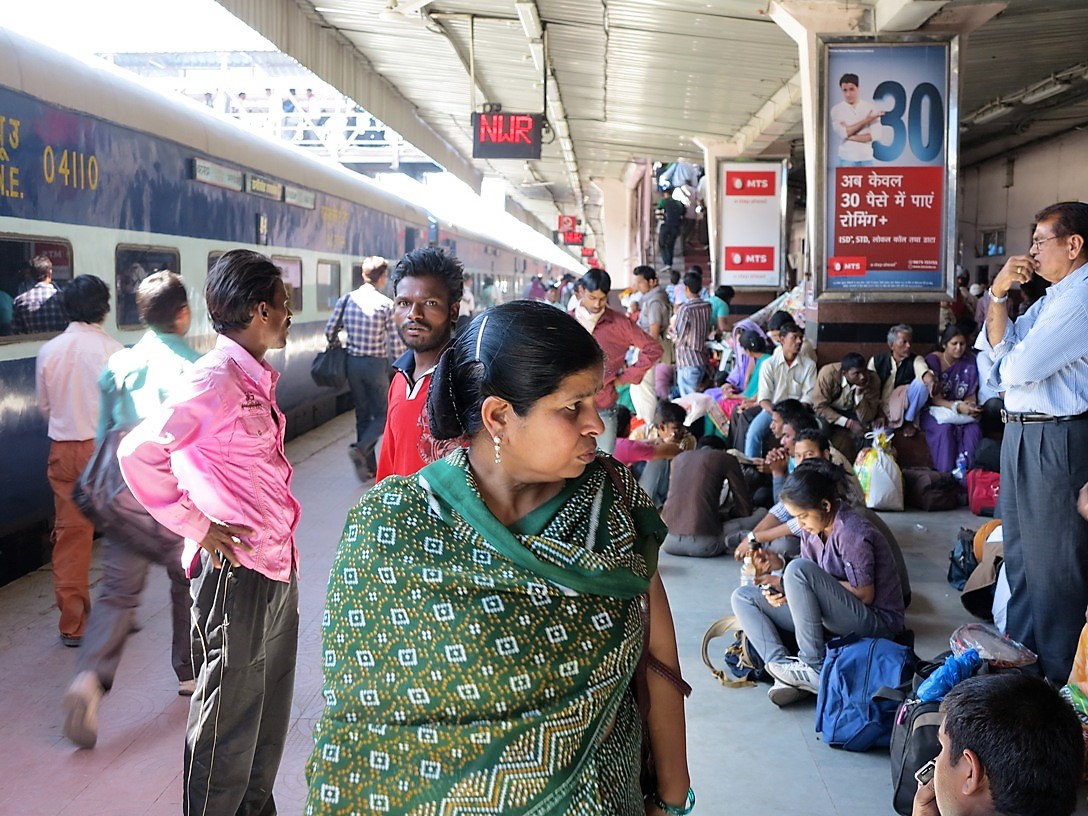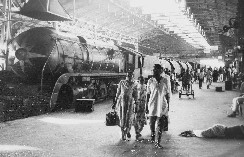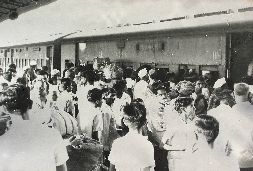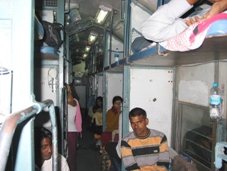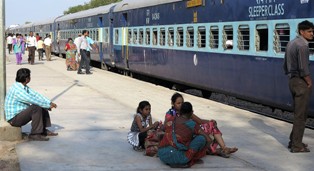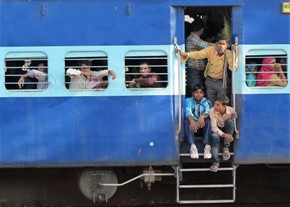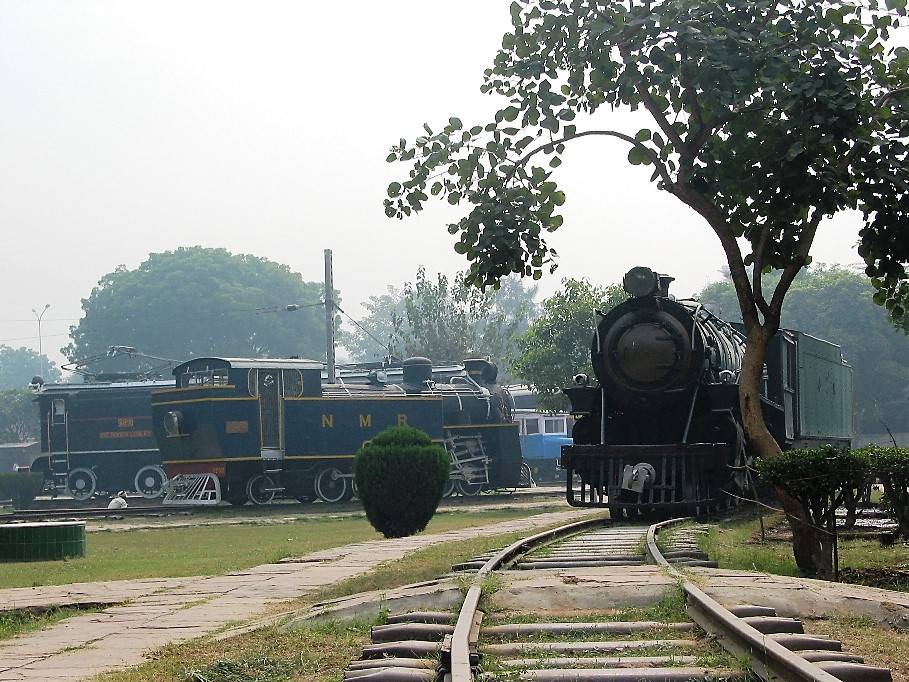The Indian railways is a dream to any railway enthusiast. Once you have had a train ride in India, you will never forget it. After that, train rides anywhere else will be reduced to a transport in synthetic metal tubes without any smell or atmosphere! And if you really want to know India’s people and landscapes as a tourist, the best way to do it is to take the train to some distant destination in the country. Here, you will get the experience of your life with multi-playable impressions from your internal memory card after the return to your homeland: The yelling sound from the tea vendors, the heavy noise from the trains crossing the iron bridges, the minor-keys of the whistles from the locomotives. Oh yes, railways really ARE poetic!
The Indian railways is gigantic company run by The Republic of India – in fact the biggest employer of the world – with about 1.5 million employees. And talking about records: Every day, about 14 million people are transported on more than 63.000 kilometres of rails. It was the British colonists, who built most of the lines, and after the independence of India at the end of the forties, the country has maintained and extended the enormous organization, which today works surprisingly effective.
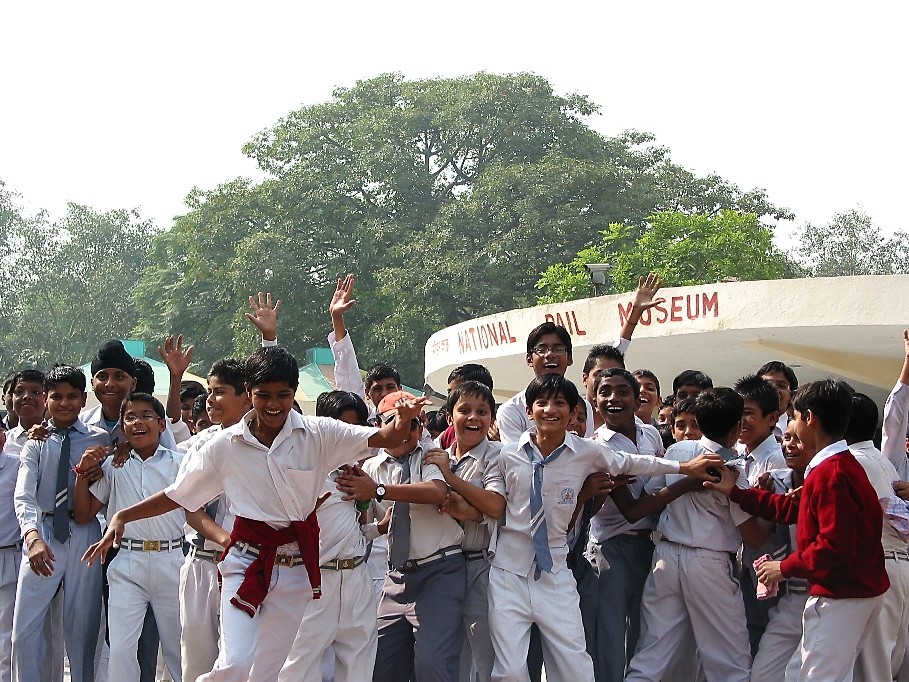
No, it's NOT a scene from the movie "Slumdog Millionaire". It's a party of cheerful school children at The National Rail Museum in New Delhi, who apparently found us much more interesting than the old steam locomotives!
India has a vast potential of direct and alternative experience, but few of this can compare with what you see at an Indian railway station. Everything is available here, including very exotic folklore with all the consequences of that: Porters, paper vendors, shoe-blackers, restaurants, bookshops waiting rooms, bathrooms, tea vendors, you name it.
My experience with the Indian railways derives from 2 very different time epochs. The first time was in the spring of 1969, when I travelled overland from Denmark to India and Nepal along"The Hippie Trail" by public transport. Part of the trip (from the Pakistani border to Nepal) was by train through India, and this was really an overwhelming experience. The crowds, the total chaos at the stations, the tea vendors, the curiosity, the smell, the dust, the extremely long trains - not to speak of the gigantic steam locomotives, the dream of any railway enthusiast! In Denmark, the era of steam locomotives faded out during the sixties, but not in India! I can't explain why these machines impressed me so much, but several months after my return to Denmark, the whistle of the gigantic, Indian steam locomotives and the heavy noise from the trains crossing the iron bridges of northern India kept playing in my mind. Because of the enormous density of the population, it seemed as if a big part of the inhabitants of India were making eternal train travels. Travelling with an Indian train for days was a hard experience, and no backpackers, who have travelled on a 3.rd class train in India, will ever forget it. But believe it or not: Today, several years later, when I look at my photos and read my diary, the train rides in India seem exciting and adventurous!
My second train period in India was 40 years later, in the autumn of 2009. Much has changed in the country since 1969, but the experience you may get by a train ride is basicly the same. Apart from the fact, that the steam locomotives have almost disappeared, and that the poverty in the country is not as extreme as forty years ago.
In November 2009, we had a train ride by night from Varanasi to Agra in northern India. We had spent 3 incredibly exciting days in Varanasi, which is one of the holiest cities in India, and in the evening, we drove through the chaotic crowds of people and traffic from our hotel to the railway station. At the moment when I entered the train platforms, I felt like travelling 40 years back in time. Almost everything was still there: The crowds, the beggars, the tea vendors, the sounds and the smells! This time, I travelled with friends, who had never been to India before, and I hope and believe, that they caught the exotic atmosphere. According to my girl friend, our second class sleeper looked like a cattle transport, but in fact, we all slept quite well that night!
Before our return to Denmark, we visited the remarkable Indian Rail Museum in New Delhi, where a big number of vintage locomotives and wagons can be admired from the 170-year-old train history of the country. There are no running vintage trains in the museum, but anyway, I strongly recommend it to all train enthusiasts. My great dream when I was 7 years old was to become an engine-driver, and in the museum, you may climb most of the old locomotives. Better than nothing!
Click or touch the photos below for bigger size.










